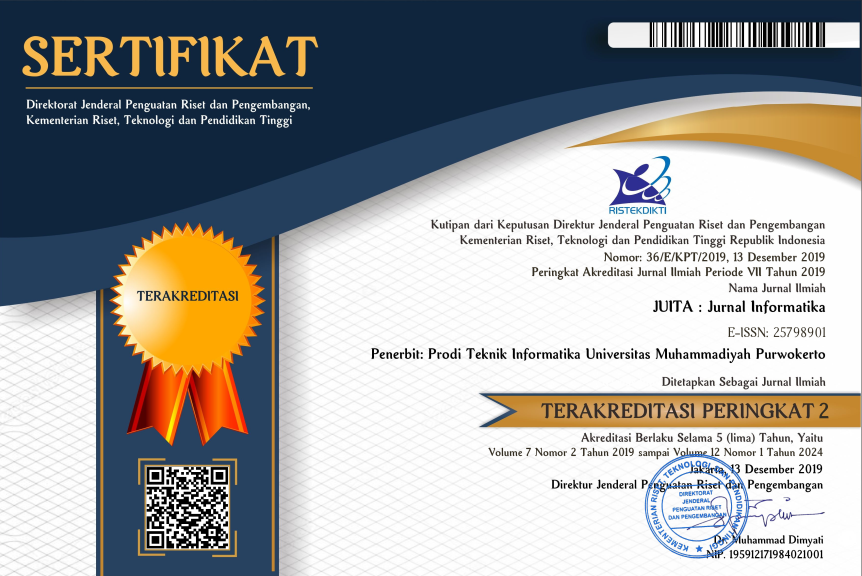Digital Twin and Blockchain Extension in Smart Buildings Platform as Cyber-Physical Systems
Abstract
Keywords
References
[1] C. K. Metallidou, K. E. Psannis, and E. A. Egyptiadou, “Energy Efficiency in Smart Buildings: IoT Approaches,” IEEE Access, vol. 8, 2020, doi: 10.1109/ACCESS.2020.2984461.
[2] J. Qi, Y. Kim, C. Chen, X. Lu, and J. Wang, “Demand response and smart buildings: A survey of control, communication, and cyber-physical security,” ACM Transactions on Cyber-Physical Systems, vol. 1, no. 4, 2017, doi: 10.1145/3009972.
[3] S. Senthilkumar, M. Danasekar, and B. K., “IoT-Based Smart Gardening System Using the Cloud,” Advances in Systems Analysis, Software Engineering, and High Performance Computing. 2022.
[4] R. Zhao, Z. Chen, and F. Xue, “A blockchain 3.0 paradigm for digital twins in construction project management,” Autom Constr, vol. 145, 2023, doi: 10.1016/j.autcon.2022.104645.
[5] A. Daissaoui, A. Boulmakoul, L. Karim, and A. Lbath, “IoT and Big Data Analytics for Smart Buildings: A Survey,” in Procedia Computer Science, 2020. doi: 10.1016/j.procs.2020.03.021.
[6] N. Funabiki, D. Pramadihanto, R. Arridha, and S. Sukaridhoto, “Classification extension based on IoT-big data analytic for smart environment monitoring and analytic in real-time system,” International Journal of Space-Based and Situated Computing, vol. 7, no. 2, 2017, doi: 10.1504/ijssc.2017.10008038.
[7] Y. Y. F. Panduman, S. Sukaridhoto, and A. Tjahjono, “A Survey of IoT Platform Comparison for Building Cyber-Physical System Architecture,” in 2019 2nd International Seminar on Research of Information Technology and Intelligent Systems, ISRITI 2019, 2019. doi: 10.1109/ISRITI48646.2019.9034650.
[8] M. F. Falah, S. Sukaridhoto, M. U. H. Al Rasyid, and H. Wicaksono, “Design of virtual engineering and digital twin platform as implementation of cyber-physical systems,” in Procedia Manufacturing, 2020. doi: 10.1016/j.promfg.2020.11.055.
[9] F. Tao, B. Xiao, Q. Qi, J. Cheng, and P. Ji, “Digital twin modeling,” Journal of Manufacturing Systems, vol. 64. 2022. doi: 10.1016/j.jmsy.2022.06.015.
[10] C. Pylianidis, S. Osinga, and I. N. Athanasiadis, “Introducing digital twins to agriculture,” Comput Electron Agric, vol. 184, 2021, doi: 10.1016/j.compag.2020.105942.
[11] J. J. Hunhevicz, M. Motie, and D. M. Hall, “Digital building twins and blockchain for performance-based (smart) contracts,” Autom Constr, vol. 133, 2022, doi: 10.1016/j.autcon.2021.103981.
[12] F. Kamalov, B. Pourghebleh, M. Gheisari, Y. Liu, and S. Moussa, “Internet of Medical Things Privacy and Security: Challenges, Solutions, and Future Trends from a New Perspective,” Sustainability (Switzerland), vol. 15, no. 4. 2023. doi: 10.3390/su15043317.
[13] H. D. Zubaydi, P. Varga, and S. Molnár, “Leveraging Blockchain Technology for Ensuring Security and Privacy Aspects in Internet of Things: A Systematic Literature Review,” Sensors, vol. 23, no. 2. 2023. doi: 10.3390/s23020788.
[14] N. Ma, A. Waegel, M. Hakkarainen, W. W. Braham, L. Glass, and D. Aviv, “Blockchain + IoT sensor network to measure, evaluate and incentivize personal environmental accounting and efficient energy use in indoor spaces,” Appl Energy, vol. 332, 2023, doi: 10.1016/j.apenergy.2022.120443.
[15] P. Sharma, R. Jindal, and M. D. Borah, “A review of smart contract-based platforms, applications, and challenges,” Cluster Comput, vol. 26, no. 1, 2023, doi: 10.1007/s10586-021-03491-1.
[16] M. S. Ali, M. Vecchio, M. Pincheira, K. Dolui, F. Antonelli, and M. H. Rehmani, “Applications of Blockchains in the Internet of Things: A Comprehensive Survey,” IEEE Communications Surveys and Tutorials, vol. 21, no. 2. 2019. doi: 10.1109/COMST.2018.2886932.
[17] M. S. Farooq, Z. Kalim, J. N. Qureshi, S. Rasheed, and A. Abid, “A Blockchain-Based Framework for Distributed Agile Software Development,” IEEE Access, vol. 10, 2022, doi: 10.1109/ACCESS.2022.3146953.
[18] M. Moalagh and A. E. Ghadi, “Blockchain-Based ERP System: Architecture and Opportunities for Future,” Journal of Information Technology Management, no. Special Issue, 2022.
[19] Q. Xu, Z. He, Z. Li, M. Xiao, R. S. M. Goh, and Y. Li, “An effective blockchain-based, decentralized application for smart building system management,” in Real-Time Data Analytics for Large Scale Sensor Data, 2019. doi: 10.1016/B978-0-12-818014-3.00008-5.
[20] M. Das, X. Tao, Y. Liu, and J. C. P. Cheng, “A blockchain-based integrated document management framework for construction applications,” Autom Constr, vol. 133, 2022, doi: 10.1016/j.autcon.2021.104001.
[21] D. Di Francesco Maesa and P. Mori, “Blockchain 3.0 applications survey,” J Parallel Distrib Comput, vol. 138, 2020, doi: 10.1016/j.jpdc.2019.12.019.
[22] Y. Wang, C. H. Chen, and A. Zghari-Sales, “Designing a blockchain enabled supply chain,” Int J Prod Res, vol. 59, no. 5, 2021, doi: 10.1080/00207543.2020.1824086.
[23] N. A. Satrio, S. Sukaridhoto, M. U. H. Al Rasyid, R. P. N. Budiarti, I. A. Al-Hafidz, and E. D. Fajrianti, “Blockchain integration for hospital information system management,” Bali Medical Journal, vol. 11, no. 3, pp. 1195–1201, 2022, doi: 10.15562/bmj.v11i3.3540.
[24] S. Markus and P. Buijs, “Beyond the hype: how blockchain affects supply chain performance,” Supply Chain Management, vol. 27, no. 7, 2022, doi: 10.1108/SCM-03-2022-0109.
[25] T. M. Tan and S. Saraniemi, “Trust in blockchain-enabled exchanges: Future directions in blockchain marketing,” J Acad Mark Sci, vol. 51, no. 4, 2023, doi: 10.1007/s11747-022-00889-0.
[26] G. Li, B. He, Z. Wang, X. Cheng, and J. Chen, “Blockchain-Enhanced Spatiotemporal Data Aggregation for UAV-Assisted Wireless Sensor Networks,” IEEE Trans Industr Inform, vol. 18, no. 7, 2022, doi: 10.1109/TII.2021.3120973.
[27] I. Radeva and I. Popchev, “Blockchain-Enabled Supply-Chain in Crop Production Framework,” Cybernetics and Information Technologies, vol. 22, no. 1, 2022, doi: 10.2478/cait-2022-0010.
[28] Y. Zhan, Y. Xiong, and X. Xing, “A conceptual model and case study of blockchain-enabled social media platform,” Technovation, vol. 119, 2023, doi: 10.1016/j.technovation.2022.102610.
[29] N. Elisa, L. Yang, F. Chao, and Y. Cao, “A framework of blockchain-based secure and privacy-preserving E-government system,” Wireless Networks, vol. 29, no. 3, 2023, doi: 10.1007/s11276-018-1883-0.
[30] A. Qammar, A. Karim, H. Ning, and J. Ding, “Securing federated learning with blockchain: a systematic literature review,” Artif Intell Rev, vol. 56, no. 5, 2023, doi: 10.1007/s10462-022-10271-9.
DOI: 10.30595/juita.v11i2.18704
Refbacks
- There are currently no refbacks.

This work is licensed under a Creative Commons Attribution 4.0 International License.
ISSN: 2579-8901
- Visitor Stats
View JUITA Stats










